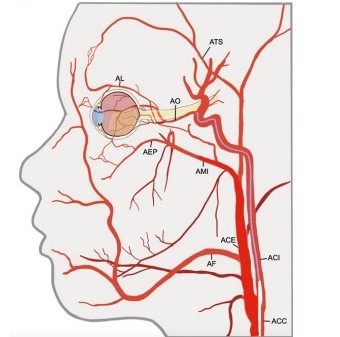Abstract
ABSTRACT
Introduction: Adverse neonatal outcomes are associated with a great economic cost to health systems. There is growing concern about the directly proportional relationship between the number of survivors and the disability rates of preterm infants. The objective was to describe the morbidity and mortality in newborns less than 32 weeks of gestational age and to determine the associated factors. Materials and methods: Cross-sectional study with an analytical component, which included all preterm newborns under 32 weeks of gestational age, who were born between January 2018 and December 2020 and who continued their follow-up in the Mother Kangaroo program of the same institution. Results:108 newborns were identified. The main outcomes were bronchopulmonary dysplasia with a frequency of 85.9% among survivors and an overall mortality of 27.7%. The strong association between septic shock and death is highlighted (ORa = 275; p = 0.004); in the same sense, gestational age (ORa = 83.3; p = 0.004). Conclusions: The incidence of BPD in preterms younger than 32 weeks is high, constituting the most important morbidity in this group, with a significant associated global mortality. In terms of mortality the probability of dying in these newborns is explained by lower gestational age (<28 weeks), anemia, transfusions and septic shock. Keywords: Morbidity; Mortality; Preterms; Neonates (Source DeCS).
REFERENCIAS BIBLIOGRÁFICAS
Vwalika B, Price JT, Rosenbaum A, Stringer JSA. Reducing the global burden of preterm births. Lancet Glob Health. 2019;7(4):e415.
Seethapathy J, Boominathan P, Uppunda AK, Ninan B. Changes in Auditory Brainstem Response in very preterm and late preterm infants. Int J Pediatr Otorhinolaryngol. 2019;121:88-94.
Frey HA, Klebanoff MA. The epidemiology, etiology, and costs of preterm birth. Semin Fetal Neonatal Med. 2016;21(2):68-73.
Tracy MK, Berkelhamer SK. Bronchopulmonary Dysplasia and Pulmonary Outcomes of Prematurity. Pediatr Ann. 2019;48(4):e148-e153.
Bancalari E, Claure N, Sosenko IR. Bronchopulmonary dysplasia: changes in pathogenesis, epidemiology and definition. Semin Neonatol. 2003;8(1):63-71.
Reiterer F, Scheuchenegger A, Resch B, Maurer-Fellbaum U, Avian A, Urlesberger B. Bronchopulmonary dysplasia in very preterm infants: Outcome up to preschool age, in a single center of Austria. Pediatr Int. 2019;61(4):381-387.
García Reymundo M, Hurtado Suazo JA, Calvo Aguilar MJ, et al. Recomendaciones de seguimiento del prematuro tardío [Follow-up recommendations for the late preterm infant]. An Pediatr (Engl Ed). 2019;90(5):318.e1-318.e8
Castro Carrasco, Pablo, & Barraza Rodríguez, Paulo. (2007). Diferencias Cerebrales en Prematuros y su Relación con el Desarrollo de sus Funciones Cognitivas. Terapia psicológica, 25(2), 183-188.
Brandt I, Sticker EJ, Höcky M, Lentze MJ. Transient abnormal neurologic signs (TANS) in a longitudinal study of very low birth weight preterm infants. Early Hum Dev. 2000;59(2):107-126.
Degos V, Loron G, Mantz J, Gressens P. Neuroprotective strategies for the neonatal brain. Anesth Analg. 2008;106(6):1670-1680.
Dogra MR, Katoch D, Dogra M. An Update on Retinopathy of Prematurity (ROP). Indian J Pediatr. 2017;84(12):930-936.
Giraldo M., Hurtado A., Donado J., Molina M. Epidemiología de la retinopatía del prematuro en Medellín, 2003-2008. Iatreia Vol. 24 (3): 250 - 258, 2011.
Multicenter trial of cryotherapy for retinopathy of prematurity. Preliminary results. Cryotherapy for Retinopathy of Prematurity Cooperative Group. Arch Ophthalmol. 1988;106(4):471-479.
Kiciński P, Kęsiak M, Nowiczewski M, Gulczyńska E. Bronchopulmonary dysplasia in very and extremely low birth weight infants - analysis of selected risk factors. Pol Merkur Lekarski. 2017;42(248):71-75.
Geary C, Caskey M, Fonseca R, Malloy M. Decreased incidence of bronchopulmonary dysplasia after early management changes, including surfactant and nasal continuous positive airway pressure treatment at delivery, lowered oxygen saturation goals, and early amino acid administration: a historical cohort study. Pediatrics. 2008;121(1):89-96.
Jiangsu Multicenter Study Collaborative Group for Breastmilk Feeding in Neonatal Intensive Care Units. Zhonghua Er Ke Za Zhi. 2019;57(1):33-39.
Tapia JL, Agost D, Alegria A, et al. Bronchopulmonary dysplasia: incidence, risk factors and resource utilization in a population of South American very low birth weight infants. J Pediatr (Rio J). 2006;82(1):15-20.
Chaw PS, Hua L, Cunningham S, et al. Respiratory Syncytial Virus-Associated Acute Lower Respiratory Infections in Children With Bronchopulmonary Dysplasia: Systematic Review and Meta-Analysis. J Infect Dis. 2020;222(Suppl 7):S620-S627.
Voynow JA. "New" bronchopulmonary dysplasia and chronic lung disease. Paediatr Respir Rev. 2017;24:17-18.
Instituto Nacional de Salud INS. Boletín epidemiológico semanal BES. Mortalidad Perinatal y Neonatal y Morbilidad Materna Extrema Neonatal. Colombia, 2020. www.ins.gov.co
Lehtonen L, Gimeno A, Parra-Llorca A, Vento M. Early neonatal death: A challenge worldwide. Semin Fetal Neonatal Med. 2017;22(3):153-160.
Pallás Alonso C, García González P, Jimenez Moya A, et al. Protocolo de seguimiento para el recién nacido menor de 1.500 g o menor de 32 semanas de edad gestación [Follow-up protocol for newborns of birthweight less than 1500 g or less than 32 weeks gestation]. An Pediatr (Barc). 2018;88(4):229.e1-229.e10.
Counsell SJ, Boardman JP. Differential brain growth in the infant born preterm: current knowledge and future developments from brain imaging. Semin Fetal Neonatal Med. 2005;10(5):403-410.
Bhutta AT, Cleves MA, Casey PH, Cradock MM, Anand KJ. Cognitive and behavioral outcomes of school-aged children who were born preterm: a meta-analysis. JAMA. 2002;288(6):728-737.
Di Fiore JM, MacFarlane PM, Martin RJ. Intermittent Hypoxemia in Preterm Infants. Clin Perinatal. 2019;46(3):553-565.
David K Coats, M D. Retinopathy of prematurity: Treatment and prognosis. UpToDate, 2020.
Sola A, Chow L, Rogido M. Retinopatía de la prematuridad y oxigenoterapia: una relación cambiante [Retinopathy of prematurity and oxygen therapy: a changing relationship]. An Pediatr (Barc). 2005;62(1):48-63.
Polin RA, Carlo WA; Committee on Fetus and Newborn; American Academy of Pediatrics. Surfactant replacement therapy for preterm and term neonates with respiratory distress. Pediatrics. 2014;133(1):156-163.
Hussain WA, Marks JD. Approaches to Noninvasive Respiratory Support in Preterm Infants: From CPAP to NAVA. Neoreviews. 2019;20(4):e213-e221.
Roberts D, Brown J, Medley N, Dalziel SR. Antenatal corticosteroids for accelerating fetal lung maturation for women at risk of preterm birth. Cochrane Database Syst Rev. 2017;3(3):CD004454.

This work is licensed under a Creative Commons Attribution 4.0 International License.
Copyright (c) 2021 antonio carlos puello avila, Edgar Felipe Laiseca Torres


